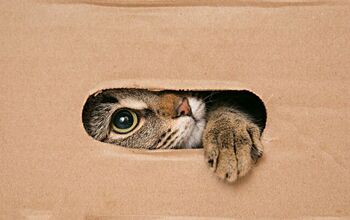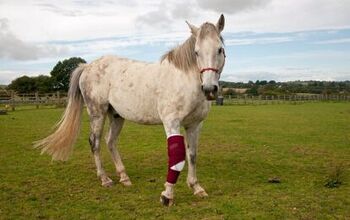5 Most Common Rabbit Diseases and How To Prevent Them

Just like any other pet animal, rabbits are also susceptible to a range of diseases and illnesses throughout their life. Some might be due to genetic factors, or other environmental factors, and some are contracted from other rabbits – in either case, it’s important to spot the signs on time to make sure your pet has the best chances of recovering from whatever ails them. To help you recognize when your rabbit needs medical help, we’ve rounded up the 5 most common rabbit diseases and their symptoms.
Gastrointestinal (GI) Stasis
The dreaded GI stasis is, unfortunately, a fairly common issue among pet rabbits, but if left untreated, it can quickly become fatal. This is why it’s essential to know how to recognize this sneaky but deadly disease! GI stasis happens when the gut microbiome of a rabbit is out of balance and there are not enough good bacteria in their digestive tract, which contributes to their intestines slowing down and not being able to digest food. As a result, hair ingested when self-grooming can get stuck in their intestines, causing a fatal blockage – which is why many people mistakenly believe that GI stasis is caused by hairball blockage when in reality it precedes it.
The main symptoms of GI stasis are gassiness, diarrhea, lethargy, and teeth grinding combined with a hunched posture, indicating that your rabbit is in pain. If you notice any of these, be sure to contact your vet ASAP!
The best way to prevent gastrointestinal stasis is to ensure your pet’s digestive system is functioning optimally – by ensuring that the majority of their diet consists of quality hay to provide them with fiber. Also, it pays to make sure that their teeth are in check, as dental pain or discomfort has a direct impact on their diet, and, as such, could be a contributing factor to GI stasis.
Overgrown Teeth
Unlike most animals, a rabbit’s teeth never stop growing. That’s right, your pet bunny’s teeth will grow for as long as they live – but it can become an issue if they are not consistently filed down. One of many reasons why rabbits need a diet rich in hay is the fact that chewing on roughage helps keep a bunny’s teeth in check by slowly grinding them down. Having in mind that a rabbit’s teeth can grow up to 4-5 inches a year if your pet consumes mostly soft pellets or leafy greens and doesn’t eat vast amounts of coarse hay each day, problems can quickly arise.
When a rabbit's teeth are overgrown, it is extremely painful for them, as the teeth can cut into their gums, cheeks, or tongue – or be abcessed at the root. Either way, you’ll notice your rabbit is drooling excessively, loss of appetite, and as a result, loss of stool and GI stasis. In other words, if you neglect to address this issue, it can prove to be fatal for your bunny.
The best way to prevent overgrown teeth is to ensure your pet’s diet is rich in grass hay and to regularly check their teeth. Once they are overgrown, the only solution is to get them to a veterinarian that specializes in rabbits, so they can put the rabbit under anesthesia and trim the teeth down.
Head Tilt or Torticollis
If you notice that your bunny is constantly tilting their head to one side, don’t ignore it – it can be a sign that they have a serious health issue that’s causing it. Usually, it’s one of two things that cause head tilt: bacterial infection or parasitic infestation. In the first case, a rabbit is suffering from an inner ear infection that has progressed to a more severe state. The ear canal will be full of puss and your rabbit will tilt their head, flicker their eyes, have vertigo, and lose appetite. When it's an issue of parasites, it's a protozoan named Encephalitozoon cuniculi that is to blame. This microscopic parasite infects the brain and the central nervous system, resulting in a range of neurological symptoms such as head tilting, seizures, tremors, paralysis or weakness of hind limbs, eye abnormalities, and so on.
Regardless of the underlying issue, both torticollis-causing illnesses are treatable when diagnosed on time. Anti-inflammatory drugs are a must in both cases, either paired with antibiotics or anti-parasitics, depending on your pet’s specific problem.
Myxomatosis
Unfortunately, this viral rabbit disease is both highly contagious and often fatal. It is transmitted via fleas, mosquitoes, or from one rabbit to another – if they are in close contact and immunocompromised. The symptoms of myxomatosis are swelling, redness, or ulcers around the eyes, nose, and genital region, discharge from the eyes and nose, respiratory issues, and loss of appetite – to name the easiest to spot. There’s no cure for myxomatosis, so if the disease has progressed to severe symptoms, the only course of action is offering supportive care or euthanasia as the bunny won’t recover.
Luckily, even though myxomatosis isn’t treatable or curable, it is completely preventable. There is a vaccine against myxomatosis for rabbits that will keep your bunny safe from this cruel disease. Even if a vaccinated rabbit catches this disease, it is only in a mild form which is fully treatable and won’t cause severe issues and death as it would in an unvaccinated bunny.
Rabbit Hemorrhagic Disease Virus (RHDV, Calicivirus)
As the name suggests, this infectious disease attacks a rabbit’s internal organs and causes hemorrhaging (internal bleeding), resulting in a fatal outcome. And as if that wasn’t horrible enough, rabbit calicivirus is highly spreadable, as it can be transmitted through mosquitoes, flies, contact with infected rabbits or droppings – even other animals and humans can bring rabbit hemorrhagic disease to the home and infect the bunny. In some countries, such as Australia and New Zealand, strains of RHDV are intentionally released in the wild to help keep the population of wild rabbits under control, as they are considered a pest in those areas.
While there is no cure or treatment that can help a rabbit that’s been infected by rabbit hemorrhagic disease, there is a yearly vaccine that can keep your pet protected. It is particularly important to vaccinate your rabbit if you live in an area that uses RHDV to control rabbit populations in the wild, but in other countries, too – this sneaky virus transmits easily and has devastating consequences.

A proud mama to seven dogs and ten cats, Angela spends her days writing for her fellow pet parents and pampering her furballs, all of whom are rescues. When she's not gushing over her adorable cats or playing with her dogs, she can be found curled up with a good fantasy book.
More by Angela Vuckovic























